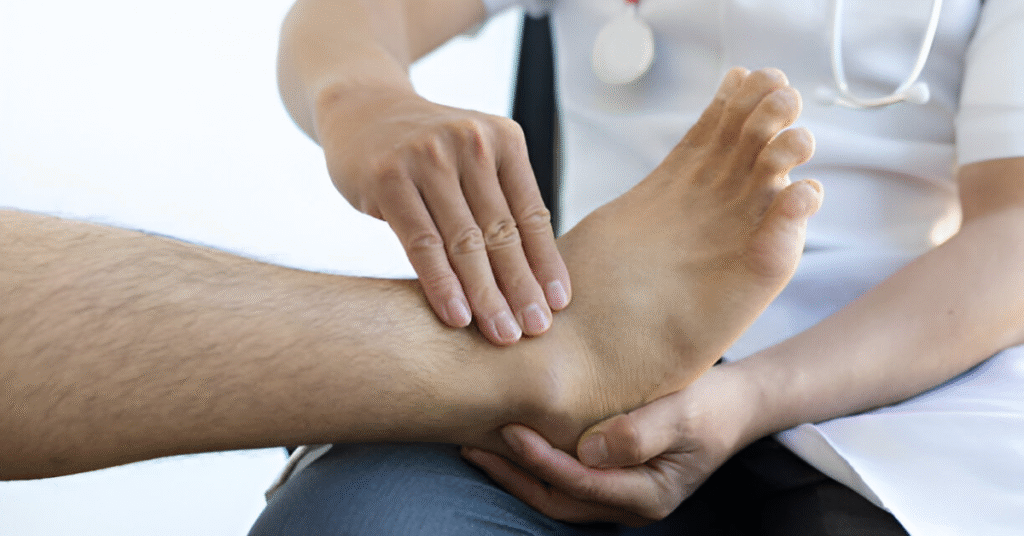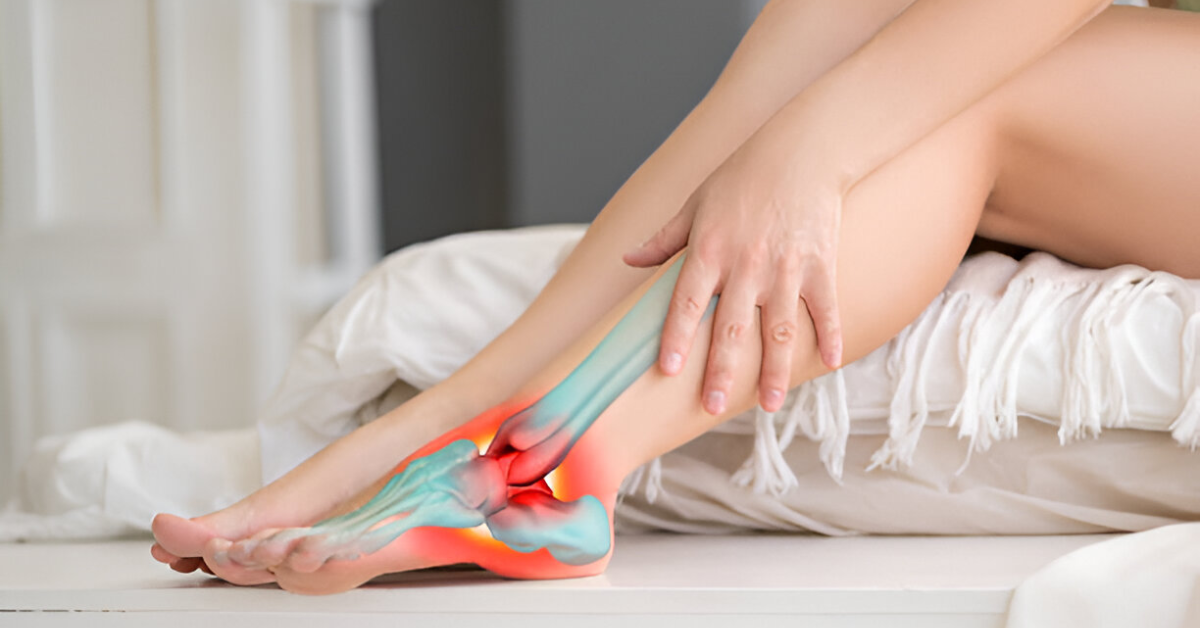Introduction
Osteoarthritis affects over 32 million adults in the U.S., making it the most common form of arthritis. Often misunderstood as merely “wear and tear,” osteoarthritis is a complex condition that can severely impact your mobility—especially in the feet and ankles. At Sole Foot and Ankle in Valparaiso, Indiana, we help patients regain function and comfort through expert diagnosis and tailored treatments.
This article explores what causes osteoarthritis, how it manifests in the foot and ankle, and what treatment options are available to help you stay active and pain-free.
Key Takeaways
- Osteoarthritis is a degenerative joint condition that often affects the feet and ankles.
- Common causes include aging, joint overuse, obesity, and prior injuries.
- Symptoms include joint pain, stiffness, swelling, and reduced mobility.
- Treatment options range from conservative methods like orthotics to surgical interventions.
- Early diagnosis and podiatric care can significantly slow progression and improve quality of life.
What Is Osteoarthritis?
Osteoarthritis (OA) is a chronic condition that occurs when the cartilage that cushions joints gradually breaks down. Without this protective layer, bones begin to rub against each other, causing pain, swelling, and stiffness. While osteoarthritis can affect any joint, the foot and ankle are particularly vulnerable due to their constant use and weight-bearing role.
Key Affected Areas in the Foot and Ankle
- Big toe joint (first metatarsophalangeal joint)
- Midfoot joints
- Subtalar joint (below the ankle)
- Ankle joint itself
Causes of Osteoarthritis in the Foot and Ankle
Osteoarthritis often results from a combination of factors rather than a single cause. Some of the most common contributors include:
1. Age and Wear
As we age, the cartilage in our joints naturally thins, increasing the likelihood of osteoarthritis.
2. Repetitive Stress
Athletes, workers who stand for long hours, or individuals with physically demanding lifestyles may experience early-onset OA.
3. Joint Injuries
Past sprains, fractures, or dislocations can accelerate cartilage degeneration, especially if improperly treated.
4. Genetics and Bone Structure
Some people may inherit joint abnormalities or alignment issues that increase stress on cartilage.
5. Obesity
Excess weight adds stress to weight-bearing joints, especially the ankles and feet.
Symptoms of Osteoarthritis
Osteoarthritis symptoms may develop gradually and worsen over time. In the foot and ankle, look out for:
- Persistent or intermittent pain in the joint
- Stiffness, especially in the morning or after resting
- Swelling around the affected area
- Limited range of motion
- A grinding sensation or popping sounds in the joint
- Bone spurs that cause irritation or deformities
Diagnosis and Tests
A podiatrist at Sole Foot and Ankle will typically start with a physical exam and review of your medical history. Common diagnostic tools include:
- X-rays: To reveal cartilage loss, bone spurs, or joint space narrowing
- MRI scans: In more complex cases to assess soft tissues and cartilage
- Gait analysis: To determine how osteoarthritis affects your walking pattern

Treatment Options for Osteoarthritis
At Sole Foot and Ankle, treatment plans are customized to each patient’s condition and lifestyle. Here’s a breakdown of common approaches:
Conservative Treatments
- Custom Orthotics: Provide support, reduce pressure on joints, and improve alignment.
- Physical Therapy: Increases flexibility and strengthens muscles around the joint.
- Medications: NSAIDs (like ibuprofen) reduce pain and inflammation.
- Lifestyle Modifications: Weight loss, joint-friendly exercise, and supportive footwear.
- Corticosteroid Injections: Offer temporary relief from inflammation and pain.
Surgical Treatments
When conservative treatments fail, surgical options may be considered:
- Arthroscopic Debridement: Removes loose cartilage and smooths joint surfaces.
- Joint Fusion (Arthrodesis): Fuses bones together to eliminate painful motion.
- Joint Replacement: In severe cases, artificial joints may be implanted.
Comparative Analysis: Non-Surgical vs Surgical Treatments
| Treatment Type | Pros | Cons |
|---|---|---|
| Non-Surgical (Orthotics, PT, Meds) | Non-invasive, minimal risk, cost-effective | May not provide long-term relief for severe cases |
| Surgical (Fusion, Replacement) | Can offer lasting relief for advanced OA | Longer recovery time, higher cost, surgical risks |
Choosing the Right Approach
The best treatment depends on the severity of your osteoarthritis, activity level, and personal goals. A podiatrist at Sole Foot and Ankle will guide you through:
- Understanding the progression of your condition
- Exploring non-invasive options first
- Making an informed decision if surgery becomes necessary
A Note from Sole Foot and Ankle
If you’re experiencing persistent foot or ankle pain, don’t wait until it becomes debilitating. At Sole Foot and Ankle in Valparaiso, Indiana, we specialize in diagnosing and treating conditions like osteoarthritis with compassion and clinical expertise. Our foot doctors are here to help you move comfortably again.
Schedule your appointment today or call us to learn more about how we can help you manage joint pain and restore your mobility.




